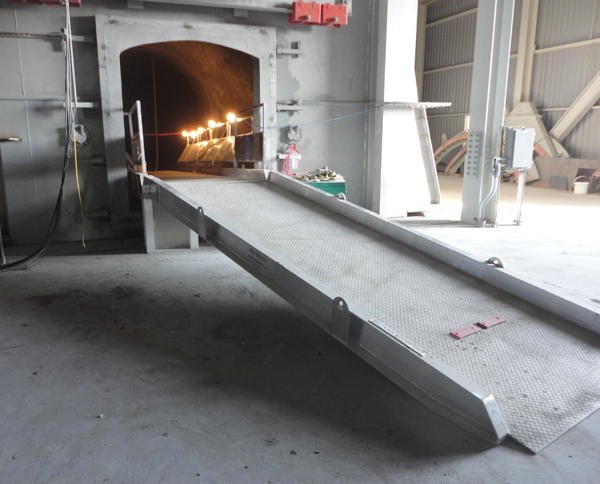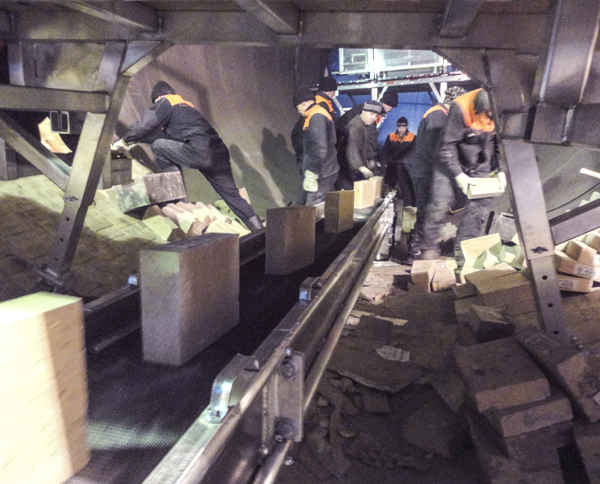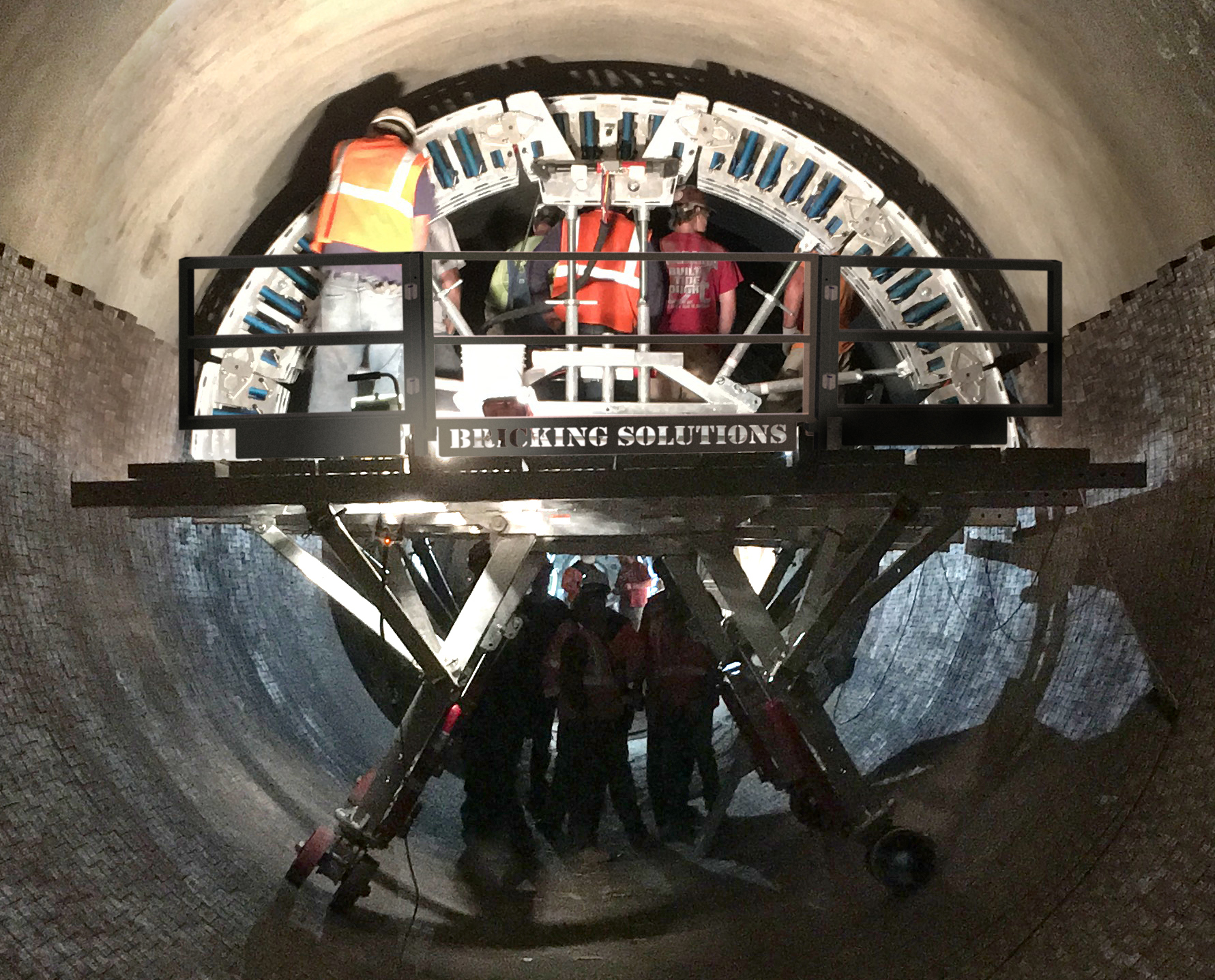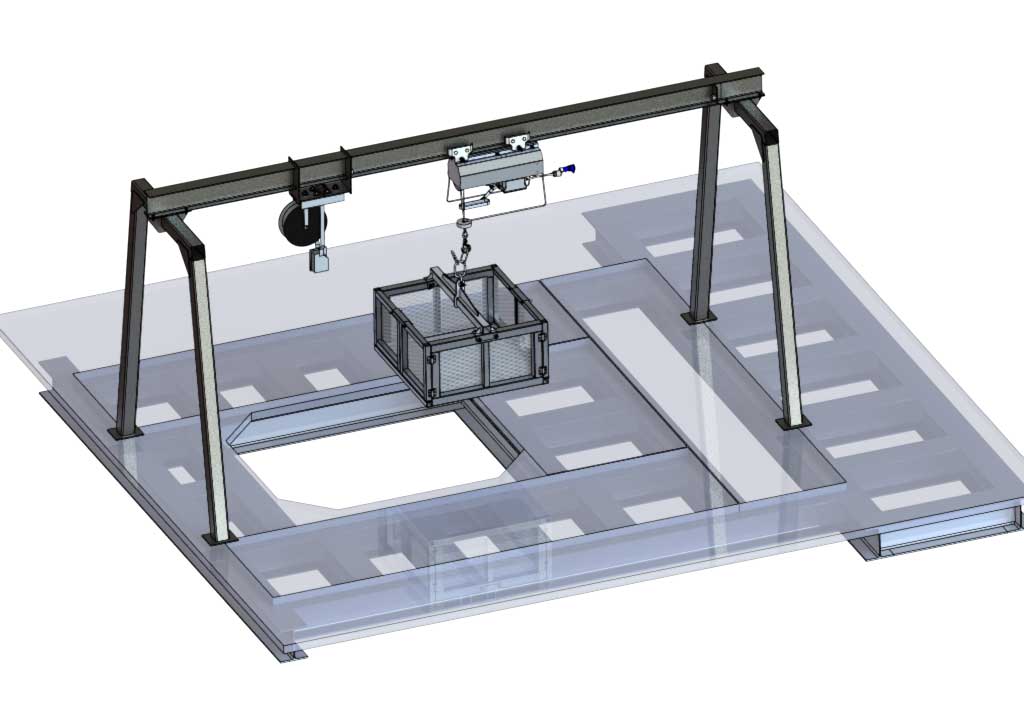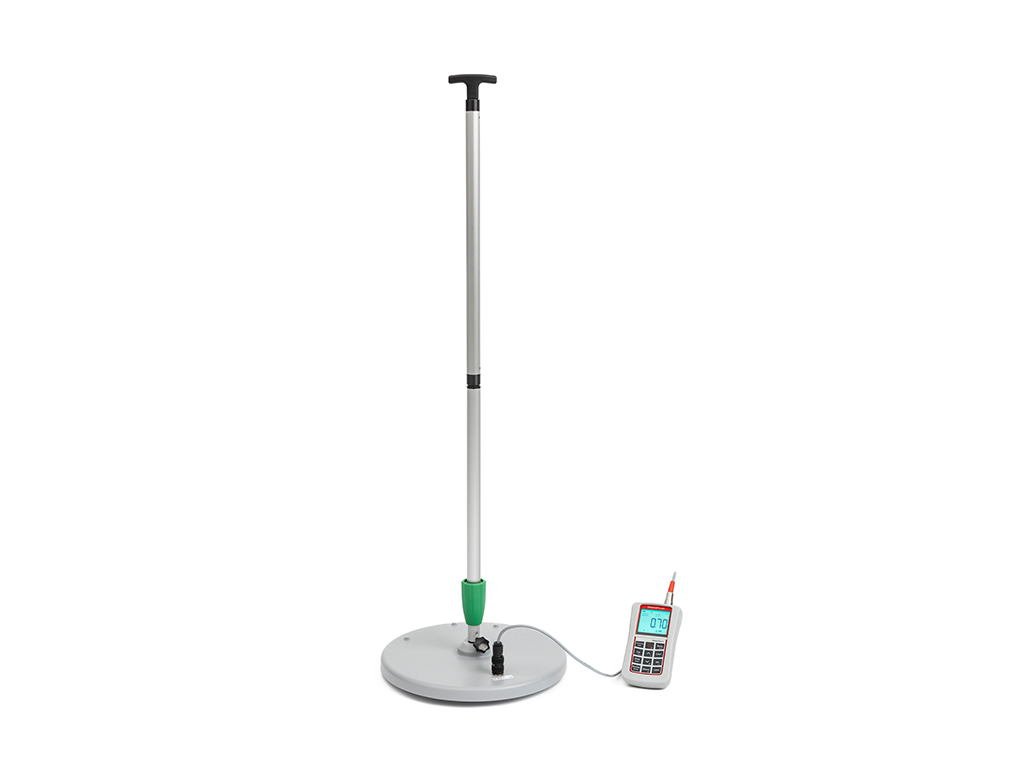With advancements in kiln technology, size and applications, out-dated refractory lining installation techniques — such as pogo sticks or jack and timber — have slowly been replaced in factories and facilities around the world. Bricking materials have not changed much, but how contractors align, place and secure them has become safer and more productive than ever. Throughout the process — from inspection to installation — original equipment manufacturers, like Bricking Solutions, provide specialized tools that contribute to this new level of efficiency.
For more than 50 years, we’ve solely focused on manufacturing refractory installation equipment. The result is a full line of specialized equipment to increase workplace safety and efficiency through every stage of kiln maintenance. We call this our Circle of Refractory. Here’s how it works.
Safety Cages and Personnel Tunnels
Starting with initial inspection, plants have come to rely on safety cages and personnel tunnels to protect workers from falling debris. Not all regions allow workers to enter kilns before coating and clinker is removed, but in areas where this practice is used, facilities that employ cages and tunnels have been able to reduce injuries.
Like many pieces of refractory inspection equipment, cages and tunnels appear deceptively simple. However, careful material selection and design are key to optimizing safety. Models manufactured with T6-6061 aircraft aluminum offer the best strength-to-weight ratio. The material is strong enough to protect workers from debris up to 140 kilograms (250 pounds) falling from a height of up to 2.44 meters (96 inches), but can be as much as 50% lighter than comparable steel models.
Additional safety features are also incorporated in safety cages from industry-leading manufacturers for even more protection. Crumple zones, for example, absorb the energy of a collapse, preventing serious injury or death. Stainless-steel netting protects workers from falling debris, as well. To increase peace of mind, look to partner with manufacturers that perform a battery of destructive tests to ensure these features perform as intended in an emergency situation.
Kiln Access Ramps
Custom-engineered kiln access ramps also provide a significant safety benefit for refractory maintenance applications. While a simple plank bridge might have sufficed in the past, today’s refractory installation relies on heavy equipment, such as skid steers and tear-out machines, to expedite the process. To get people and tools safely across the cooler, metal access ramps have become standard in facilities worldwide.
Keeping in mind that every burn floor, cooler and kiln is unique, partnering with a manufacturer that provides individualized products will help maximize safety benefits and efficiency for this vital installation component. Again, heavy-duty aluminum equipment provides durable, long-lasting results at half the weight of steel. An access ramp manufactured with this material can support as much as 6,804 kilograms (15,000 pounds) live load. Custom-designed equipment can also incorporate features such as curbs and fall guards, when necessary, to protect workers as equipment moves across the ramp.
Conveyors
Incline and hydraulic conveyors are tools refractory installers find increases employee safety and efficiency. Parts of the world with access to large labor pools might still find so-called “bucket brigades” a viable option for transferring refractory materials up kiln. However, this method results excess brick handling, which could damage refractory — not to mention a number of unnecessary sprains, strains and repetitive motion. So, with safer options readily available, progressive facilities and contractors are embracing a more automated approach.
Using a conveyor, workers can easily move materials twice as fast as manual methods with significantly less physical strain. Additionally, refractory equipment specialists provide lightweight, modular equipment that is easily adapted to fit a specific kiln, including kiln diameter, burn floor length and terrain adjustments. With sections weighing just 16-19 kilograms (35-42 pounds), transportation and installation is easy for a small crew.
Bricking Machines
While support equipment has played a major role in increasing refractory installation safety, perhaps the most significant gains have been made in the bricking process itself. The widespread adoption of bricking machines in recent decades has revolutionized the speed and overall safety of installation applications. Pogo sticks, mechanical jack screws, gluing and jack and timber techniques are still used by some contractors, but the vast majority of installations worldwide employ a bricking machine.
Features and safety benefits vary among bricking machine models, but their overall contributions to installation efficiency are undeniable. Decades-old, first-generation machines can still reduce physical strain and safety risks compared to outdated installation methods — as long as they are well maintained. Newer models provide the most innovative and cutting-edge technology such as adjustable dual-arch systems with pneumatic cylinders to push bricks into place, greatly reducing the risk of injuries from unsupported overhead bricks. Machines featuring ergonomic design elements further increase worker comfort and safety. For example, models from innovative manufacturers, such as Bricking Solutions, offer a cut-away section for unobstructed keying access to increase ease and visibility for closing out a ring. Additional safety features are also available from specialized manufacturers including non-slip decks, dual braking systems and fall guards.
An experienced crew using a bricking machine can install 1 meter (3.3 feet) of brick per hour, compared to roughly .6 meters (2 feet) with other techniques. The end result is better refractory installation which increases longevity and decreases downtime and repairs. The widespread use of bricking machines has also contributed to a significant decrease in refractory installation-related injuries and fatalities.
And Many More
From tear out to clean up, Bricking Solutions offers a full range of support equipment to make refractory installation faster, safer and more efficient. Contact our team today, to see how the tools in our Circle of Refractory can improve your operation.
